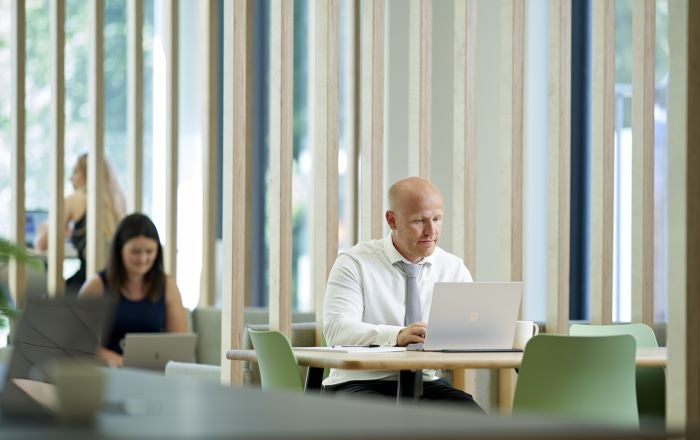
How our tech team is keeping residents and colleagues connected in the Covid-19 crisis
By Simon Peacock
1 April 2020
First published in Housing Technology Magazine
The health and safety of our customers is the number one priority for Sovereign. It always will be. At the same time, we need to make sure we look after our people working to help us achieve this. Some days this is more challenging than others and never more so than in the days we are living through now.
As the Covid-19 crisis continues to take a grip on society, we need to know what the picture looks like in the places where our residents live and where our colleagues work.
We need to know if a resident is self-isolating, we need to know where the outbreaks are in the communities where we work. And although we’re only carrying out emergency repairs, employees need to know which homes they should be visiting and which are no longer safe to go to. Sharing this information had to be simple and easy to access.
Finding a new way to work
Here at Sovereign we continually rethink the way we do things and find new ways of working, looking for innovative solutions to problems and by working together and with the available technology we came up with a really interactive, data-driven solution to keep residents and colleagues connected in these challenging times.
Using Power Apps, Power Automate and Sharepoint we very quickly created a solution - on a low code platform - for coding and managing any Covid-19 cases called in by our residents and colleagues.
These were then flagged on our housing system Active H, for MIS in a quick turnaround with vendor support. This means we can raise the call of the resident or colleague reporting unwell or symptomatic and flag it on a system that we can share with colleagues. This means our people now know which properties are in self isolation mode and where in our communities Covid-19 is most prevalent. We not only know which doors not to knock on, but also which homes will need work reassigning later on down the line. We can also work with partners in health and social care if required.
And by means of the Power Apps and Sharepoint we also simplified the deployment of the tools to all our users in the business, as it ties up with Office 365. This means our people in the field or colleagues in the contact centre or managers, can all login without any extra effort and use the app on any device.
Tracking and monitoring cases
Now our data and analytics teams are using the Power BI to help with the reporting of statistics and the dynamic dashboards as we start to see more and more cases being entered.
So far we’ve had 1500 notifications, so we’re really building up a data set that helps us understand the impact Covid-19 is having. At a glance, the dashboard tells us who the affected person is, where they are and the risk and status of each individual. That means we can understand how people and services are affected and also when self-isolation periods are ending. This means follow up contact can be made and we can check on how our residents are getting on.
The ease with which this system enables detailed and informative data means we can also issue reports on a daily basis for our Incident Management Team and the Executive Board.
The move to home working
Working from home is essential. We needed our people to be able to work from home, safely and productively - or occasionally out on the road - without any system failures. It was our job to ensure this business continuity.
We needed colleagues to learn new digital skills, and quickly – so we created quick video guides on issues like how to connect to the VPN, mobile apps, Skype features and more, so colleagues could remain secure and productive while away from the office.
Using Camtasia software we recorded demos of these various skills, sharing them via Sharepoint. Camtasia meant colleagues could annotate the videos, so users would see what they needed to do, not just read it, creating easy to use, easy to copy guides.
After the initial test working from home day last week we used Microsoft Forms Pro to create a survey, getting it ready in under an hour. We had 650 responses and used the additional analytics that we got with the pro version to make informed business decisions. By the next working day we made sure that those who needed more specialist IT equipment could take it home and carry on providing a great service for our residents.
Taking the contact centre home
The final step in our IT journey has been possibly the most exciting. We now have a fully remote, home-working contact team for the first time ever, thanks to a concerted effort across our departments.
In just two weeks we have built 101 laptops, and created 80 new ‘working from home’ kit packs, assembled by dismantling existing office equipment.
Alongside our colleagues from our office Workplace team we ensured the delivery of all this to contact advisors homes, if they couldn't collect or carry it out themselves. Our advisors are rapidly adapting to working at home, with 3000 calls already taken from customers.
This giant leap forward will give us greater flexibility in how we deliver our core service and maintain continuity. And this is not the end, the next few months will only continue to throw up challenges. But we’re not daunted – instead we’re taking this as an opportunity, that’s allowing us to think differently about how we develop future service improvements for our customers and teams.
Simon Peacock - How our tech team is keeping residents and colleagues connected in the Covid-19 crisis – first published by Housing Technology Magazine
